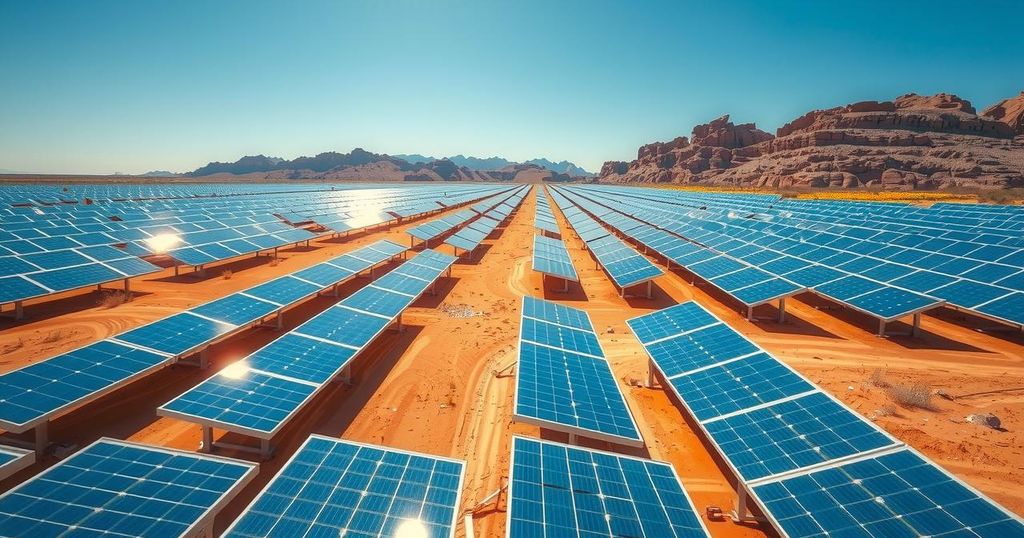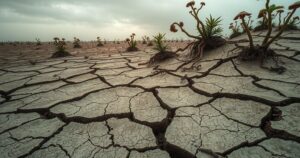POWERCHINA’s CEME1 Project in Chile Advances Clean Energy and Land Resilience

POWERCHINA’s CEME1 project in Chile has officially launched its commercial operations, coinciding with the UN’s World Day to Combat Desertification and Drought. This major solar facility, located in the Atacama Desert, has a capacity of 480 megawatts, aiming to generate 2,863 megawatt-hours daily while reducing CO2 emissions by 280,000 tons annually. The project also creates job opportunities and supports local education initiatives, reinforcing POWERCHINA’s commitment to sustainable energy development.
On June 16, 2025, the Power Construction Corporation of China, commonly known as POWERCHINA, announced that its CEME1 photovoltaic project in Chile has officially begun commercial operations. This facility, being the largest solar power project spearheaded by a single entity in Chile, is particularly timed to coincide with the United Nations World Day to Combat Desertification and Drought. It’s a significant example of how renewable energy can not only enhance land resilience but also further carbon neutrality efforts worldwide.
Situated in the harsh Atacama Desert—recognized as the driest nonpolar desert globally—the CEME1 project is located approximately 1,300 kilometers away from the Chilean capital. With an impressive installed capacity of 480 megawatts across about 400 hectares, this venture by POWERCHINA encompasses a photovoltaic field, a 33/220 kV booster station, and a single-loop transmission line of 9.2 kilometers.
The project serves a dual purpose: tackling climate change and supporting global efforts to combat land degradation. With over 40% of earth’s surface already affected, innovative energy projects like CEME1 present sustainable ways to achieve both energy production and land health goals. In an increasingly challenging climate marked by severe droughts, this project aims to mitigate these dire conditions.
The construction of CEME1 was not without its hurdles. The unrelenting hot and dry climate, coupled with high ultraviolet exposure and periodic sandstorms, created a tough environment for the project team. However, through careful planning and optimized execution strategies, they managed to tackle these obstacles effectively.
Once fully operational, the CEME1 project is anticipated to generate about 2,863 megawatt-hours of electricity daily, enough to power around 400,000 homes. It’s projected to cut carbon dioxide emissions by roughly 280,000 tons each year, aligning seamlessly with Chile’s ambitious goal of achieving carbon neutrality by 2050 and bolstering efforts for sustainable land use.
POWERCHINA’s strategic execution of the CEME1 project showcases its commitment not only to renewable energy but also to successfully undertaking large-scale initiatives in adverse conditions. The successful implementation marks a substantial step forward for POWERCHINA in the global renewable energy landscape.
Amid formidable weather challenges typically associated with the Atacama Desert, the CEME1 project has become a benchmark for POWERCHINA’s international projects. By deploying cutting-edge technologies aimed at wind resistance and seismic stability, the photovoltaic stations are designed to operate reliably in this earthquake-risk zone.
Interestingly, the structure of the project is designed to maximize land use. By using a dome-type fixed structure, the arrangement of photovoltaic modules has been optimized, thereby minimizing the need for maintenance roads and enhancing power output capabilities.
The positive local impact has also been notable, with the project generating nearly one thousand jobs during peak construction periods. Furthermore, POWERCHINA has engaged with local communities to roll out educational initiatives and skills training programs, significantly contributing to the professional development of Chile’s burgeoning renewable energy sector.
The CEME1 project signifies a key milestone not just for POWERCHINA, but also for Chile as it maneuvers towards a sustainable energy future. Through innovative engineering and community cooperation, the project not only addresses pressing energy needs but also champions ecological preservation and job creation. As renewable energy initiatives continue to expand, projects like CEME1 set a benchmark for future endeavors in this vital sector.
Original Source: www.prnewswire.com








